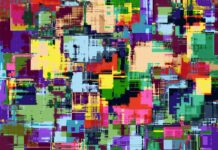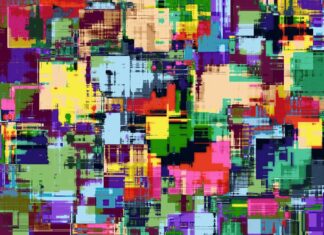Nvidia RTX is a revolutionary line of graphics processing units (GPUs) developed by Nvidia, a leading technology company in the field of computer graphics and artificial intelligence. Launched in 2018, the Nvidia RTX series has brought significant advancements in real-time ray tracing, deep learning, and overall graphics performance. This article aims to delve into the various aspects of Nvidia RTX, including its architecture, features, benefits, and impact on the gaming and creative industries.
Nvidia RTX, Nvidia RTX, Nvidia RTX—these three words have become synonymous with cutting-edge graphics technology and have garnered immense attention from enthusiasts, gamers, and professionals alike. The Nvidia RTX series is built upon the Turing architecture, which introduced a host of groundbreaking features that revolutionized the gaming and visual computing landscape. At the core of Nvidia RTX GPUs lies a powerful combination of hardware and software innovations, providing users with unprecedented realism, performance, and immersion.
One of the key features that sets Nvidia RTX apart is real-time ray tracing. Traditionally, rendering realistic lighting and reflections in computer graphics has been a complex and time-consuming process. However, Nvidia RTX GPUs leverage dedicated hardware called Ray Tracing Cores to accelerate ray tracing computations, resulting in real-time rendering of lifelike lighting effects. This breakthrough technology allows for the simulation of how light interacts with virtual objects, enhancing the visual fidelity of games and applications to new heights.
In addition to real-time ray tracing, Nvidia RTX GPUs also incorporate Tensor Cores, which are specialized hardware units designed to accelerate deep learning workloads. These Tensor Cores enable a technique called deep learning super sampling (DLSS), which significantly enhances image quality while maintaining high performance. DLSS utilizes artificial intelligence algorithms to upscale lower-resolution images in real-time, producing visually stunning results that rival native high-resolution rendering. This technology not only enhances the gaming experience but also benefits content creators and designers by providing sharper and more detailed visuals.
Nvidia RTX, Nvidia RTX—these words continue to reverberate throughout the gaming and creative industries, fueling innovation and pushing the boundaries of what is possible. The impact of Nvidia RTX GPUs can be felt across a wide range of applications and use cases. In gaming, the introduction of real-time ray tracing has ushered in a new era of visual fidelity, allowing game developers to create immersive worlds with realistic lighting, shadows, and reflections. This not only enhances the overall visual experience but also adds a new dimension of gameplay, as reflections in mirrors, accurate shadows, and global illumination contribute to a more engaging and realistic virtual environment.
Beyond gaming, Nvidia RTX GPUs have found widespread adoption in industries such as architecture, design, film, and scientific research. Professionals in these fields require powerful computing solutions to tackle complex simulations, visualizations, and data processing tasks. Nvidia RTX GPUs deliver the necessary performance and capabilities to accelerate these workflows, enabling architects to render realistic building models, filmmakers to create stunning visual effects, and scientists to analyze large datasets with unprecedented speed.
Furthermore, Nvidia RTX has fostered the growth of an active developer ecosystem. The availability of powerful hardware, coupled with software development kits (SDKs) and application programming interfaces (APIs), has empowered developers to leverage the full potential of Nvidia RTX GPUs. This has resulted in a wide range of applications and tools that take advantage of real-time ray tracing, deep learning, and other advanced features provided by Nvidia RTX. From ray-traced reflections in video editing software to AI-powered image upscaling in photography applications, the possibilities for innovation are endless.
Nvidia RTX, Nvidia RTX, Nvidia RTX—these three words have become synonymous with a new era of graphics technology, redefining the boundaries of visual computing. The Turing architecture, with its real-time ray tracing capabilities and deep learning acceleration, laid the foundation for Nvidia RTX and set a new standard in GPU performance. However, Nvidia did not stop there. Building upon the success of the Turing architecture, they introduced the next-generation Ampere architecture, which further pushed the boundaries of what Nvidia RTX GPUs could achieve.
The Ampere architecture, powering the latest Nvidia RTX GPUs, introduced several key enhancements that deliver even greater performance and efficiency. One notable improvement is the increased number of CUDA cores, which are the primary computing units of the GPU. With more CUDA cores, Ampere-based Nvidia RTX GPUs can handle more concurrent tasks and perform calculations at a faster rate, resulting in improved graphics performance and responsiveness.
Another significant feature of the Ampere architecture is the second-generation RT cores. These specialized hardware units dedicated to ray tracing have undergone optimizations to deliver even faster and more accurate ray tracing calculations. With improved RT cores, Nvidia RTX GPUs can handle complex lighting scenarios and reflections in real-time, enhancing the visual realism of games and applications.
Furthermore, Ampere introduced third-generation Tensor Cores, taking deep learning acceleration to the next level. These enhanced Tensor Cores provide increased processing power for AI-based tasks, allowing for faster training and inference of neural networks. This translates to improved performance in applications that leverage deep learning techniques, such as DLSS for real-time image upscaling and AI-driven denoising in rendering workflows.
One of the most notable additions to the Ampere architecture is the introduction of dedicated hardware for ray tracing and deep learning operations, known as the RT Core and Tensor Core respectively. This specialized hardware accelerates these computationally intensive tasks, offloading the burden from the traditional CUDA cores and enabling real-time ray tracing and AI-powered features without sacrificing overall performance.
The combination of increased CUDA cores, improved RT cores, and advanced Tensor Cores in the Ampere architecture results in significant performance gains compared to its predecessor. Nvidia RTX GPUs based on the Ampere architecture deliver unprecedented levels of graphical fidelity, enabling gamers to experience stunning visuals with smooth framerates and minimal latency.
Aside from the architectural improvements, Nvidia has also focused on enhancing the software ecosystem surrounding Nvidia RTX. One of the notable software advancements is the Nvidia DLSS (Deep Learning Super Sampling) technology, which has seen continuous refinement since its initial introduction. DLSS utilizes AI algorithms and deep learning to upscale lower-resolution images in real-time, resulting in improved image quality while maintaining high performance. This technology has become a game-changer for gamers and content creators, as it allows for smoother framerates without sacrificing visual fidelity.
Another important aspect of the Nvidia RTX software ecosystem is the support for various industry standards and APIs. Nvidia has worked closely with game developers, content creation software companies, and other technology partners to ensure that Nvidia RTX GPUs are well-integrated and optimized for popular frameworks and APIs. For example, Nvidia RTX GPUs support Microsoft’s DirectX Raytracing (DXR) API, which enables developers to implement real-time ray tracing in their games and applications with ease. This level of industry collaboration and support ensures that Nvidia RTX users can benefit from the latest advancements in graphics technology across a wide range of software.
The impact of Nvidia RTX on the gaming and creative industries cannot be overstated. With each new generation of Nvidia RTX GPUs, there is a leap in graphical fidelity, performance, and immersion. Gamers can experience lifelike visuals, realistic lighting effects, and stunning reflections, enhancing their gaming experience and bringing virtual worlds to life. Content creators, on the other hand, can leverage the power of Nvidia RTX GPUs to produce high-quality visuals, render complex scenes in real-time, and accelerate their creative workflows. Whether it’s designing architectural models, editing videos, or creating visually captivating effects, Nvidia RTX provides the necessary tools and horsepower to unlock new levels of creativity and productivity.
In the gaming industry, Nvidia RTX has sparked a wave of innovation and advancements. Game developers have embraced real-time ray tracing as a transformative technology that adds a new level of realism and immersion to their creations. By accurately simulating how light interacts with virtual objects, Nvidia RTX GPUs enable developers to create breathtaking visual effects, realistic shadows, and reflections that bring virtual worlds closer to reality. Gamers can now experience games with cinematic-quality graphics, enhanced by the intricate details and lighting nuances made possible by Nvidia RTX technology.
Nvidia RTX, with its deep learning capabilities, has also opened up exciting possibilities in the realm of artificial intelligence (AI) and machine learning (ML). The Tensor Cores in Nvidia RTX GPUs enable researchers, data scientists, and developers to leverage the immense computational power for training and inference of neural networks. This has led to advancements in various fields, including natural language processing, computer vision, robotics, and autonomous vehicles. With Nvidia RTX, the speed and efficiency of AI-related tasks have significantly increased, pushing the boundaries of what is achievable in the realm of AI-driven applications and technologies.
Beyond gaming and AI, Nvidia RTX has made a significant impact on the creative industries. Professionals in fields such as architecture, design, film, and animation rely on powerful hardware to visualize, render, and simulate complex scenes and models. Nvidia RTX GPUs provide the necessary computational capabilities to handle these demanding tasks efficiently. Architects can render realistic and detailed 3D models of buildings, enabling them to showcase designs with accurate lighting and materials. Film producers and visual effects artists can leverage real-time ray tracing to create stunning visual sequences and lifelike environments, saving time and effort compared to traditional rendering methods. From animators to product designers, the performance and features of Nvidia RTX GPUs have become indispensable tools for pushing the boundaries of creativity and delivering high-quality results.
The impact of Nvidia RTX extends beyond individual professionals and industries. The availability of powerful and accessible GPU technology has fueled collaborations, innovation, and the growth of a vibrant developer community. Nvidia provides developers with comprehensive tools, libraries, and software development kits (SDKs) to harness the full potential of Nvidia RTX GPUs. This has resulted in a myriad of applications and experiences that leverage real-time ray tracing, AI-enhanced graphics, and advanced rendering techniques. From game modders to independent developers, the Nvidia RTX ecosystem has inspired a wave of creativity and experimentation, driving the industry forward and opening new frontiers in interactive and visual experiences.
Looking ahead, the future of Nvidia RTX holds even more promise. As technology continues to advance, Nvidia will undoubtedly introduce new iterations and innovations that further enhance the capabilities of their GPUs. The ongoing pursuit of faster rendering, more accurate simulations, and higher visual fidelity will shape the future of Nvidia RTX, continuing to redefine the possibilities in gaming, content creation, AI, and beyond.
In conclusion, Nvidia RTX represents a groundbreaking advancement in GPU technology. With its real-time ray tracing capabilities, deep learning acceleration, and continuous architectural improvements, Nvidia RTX has redefined the standards of graphical fidelity and performance in gaming and creative industries. From the stunning visuals and immersive experiences it brings to gamers to the accelerated workflows and enhanced productivity it offers to professionals, Nvidia RTX has made a profound impact on the way we perceive and interact with virtual worlds. As the technology evolves and continues to push the boundaries, Nvidia RTX will undoubtedly play a pivotal role in shaping the future of graphics computing and artificial intelligence.






















